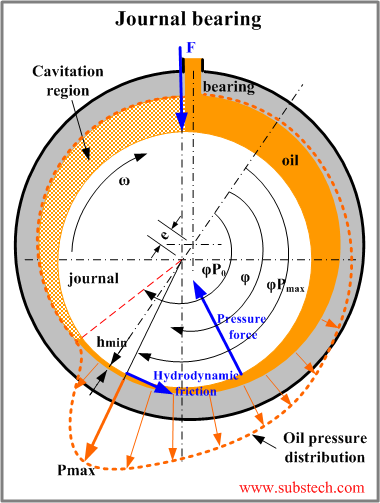Originally Posted By: KrisZ
There is this tiny, little detail in the engine called bearings.
 if the oil's HTSV goes below the minimum spec (as indicated by oil pressure) they may go boom.
if the oil's HTSV goes below the minimum spec (as indicated by oil pressure) they may go boom.
You should keep this in mind before you blindly recommend 0w20 oil based on nothing more than your butt dyno.
You may have learned about HTHS viscosity and bearing protection from my posts here. I have detailed posts about that, some giving technical formulas about the operation of the hydrodynamic bearings. Also keep in mind that it's not just the bearings but also the rings and linings that benefit from a higher HTHS viscosity.
However, you have completely missed the point. The original poster's engine recommends 5W-20 dino. You can use 0W-20 synthetic in all applications requiring 5W-20 dino, as the two oils have identical HTHS viscosity and similar or identical kinematic viscosities. On top of that, 0W-20 will actually run thicker at the top cylinder rings, where the temperatures can exceed 200 C. This is due to the higher viscosity index of 0W-20. Therefore, 0W-20 is actually thicker than 5W-20 where the lubrication is most critical. Not to mention other enormous benefits of synthetics over dino, such as better oxidation properties, lower NOACK volatility, and better fuel economy (as they have lower surface friction due to better base oil and they maintain it longer due to less oxidation).
PS: 5W-20 synthetic will have lower NOACK and less VIIs and therefore be slightly more robust than 0W-20 synthetic, but I still prefer 0W-20 due to its higher viscosity index, which not only improves the fuel economy and saves you money but may protect better at extreme temperatures (such as top rings) and also can imply a higher-quality base oil, as the quality of the base oil correlates with the viscosity index. In fact, most 0W-20s these days are using Group III+ versus Group III used in 5W-20s. I see little reason to prefer 5W-20 synthetic over 0W-20 synthetic, as the 0W-20 synthetic is a far more advanced oil with many important benefits. Besides, you will void the warranty of many new Japanese cars if you use 5W-20 instead of 0W-20. I think in the future, 0W-20 will completely replace 5W-20, just as 5w30 replaced 10w30.
There is this tiny, little detail in the engine called bearings.

You should keep this in mind before you blindly recommend 0w20 oil based on nothing more than your butt dyno.
You may have learned about HTHS viscosity and bearing protection from my posts here. I have detailed posts about that, some giving technical formulas about the operation of the hydrodynamic bearings. Also keep in mind that it's not just the bearings but also the rings and linings that benefit from a higher HTHS viscosity.
However, you have completely missed the point. The original poster's engine recommends 5W-20 dino. You can use 0W-20 synthetic in all applications requiring 5W-20 dino, as the two oils have identical HTHS viscosity and similar or identical kinematic viscosities. On top of that, 0W-20 will actually run thicker at the top cylinder rings, where the temperatures can exceed 200 C. This is due to the higher viscosity index of 0W-20. Therefore, 0W-20 is actually thicker than 5W-20 where the lubrication is most critical. Not to mention other enormous benefits of synthetics over dino, such as better oxidation properties, lower NOACK volatility, and better fuel economy (as they have lower surface friction due to better base oil and they maintain it longer due to less oxidation).
PS: 5W-20 synthetic will have lower NOACK and less VIIs and therefore be slightly more robust than 0W-20 synthetic, but I still prefer 0W-20 due to its higher viscosity index, which not only improves the fuel economy and saves you money but may protect better at extreme temperatures (such as top rings) and also can imply a higher-quality base oil, as the quality of the base oil correlates with the viscosity index. In fact, most 0W-20s these days are using Group III+ versus Group III used in 5W-20s. I see little reason to prefer 5W-20 synthetic over 0W-20 synthetic, as the 0W-20 synthetic is a far more advanced oil with many important benefits. Besides, you will void the warranty of many new Japanese cars if you use 5W-20 instead of 0W-20. I think in the future, 0W-20 will completely replace 5W-20, just as 5w30 replaced 10w30.


